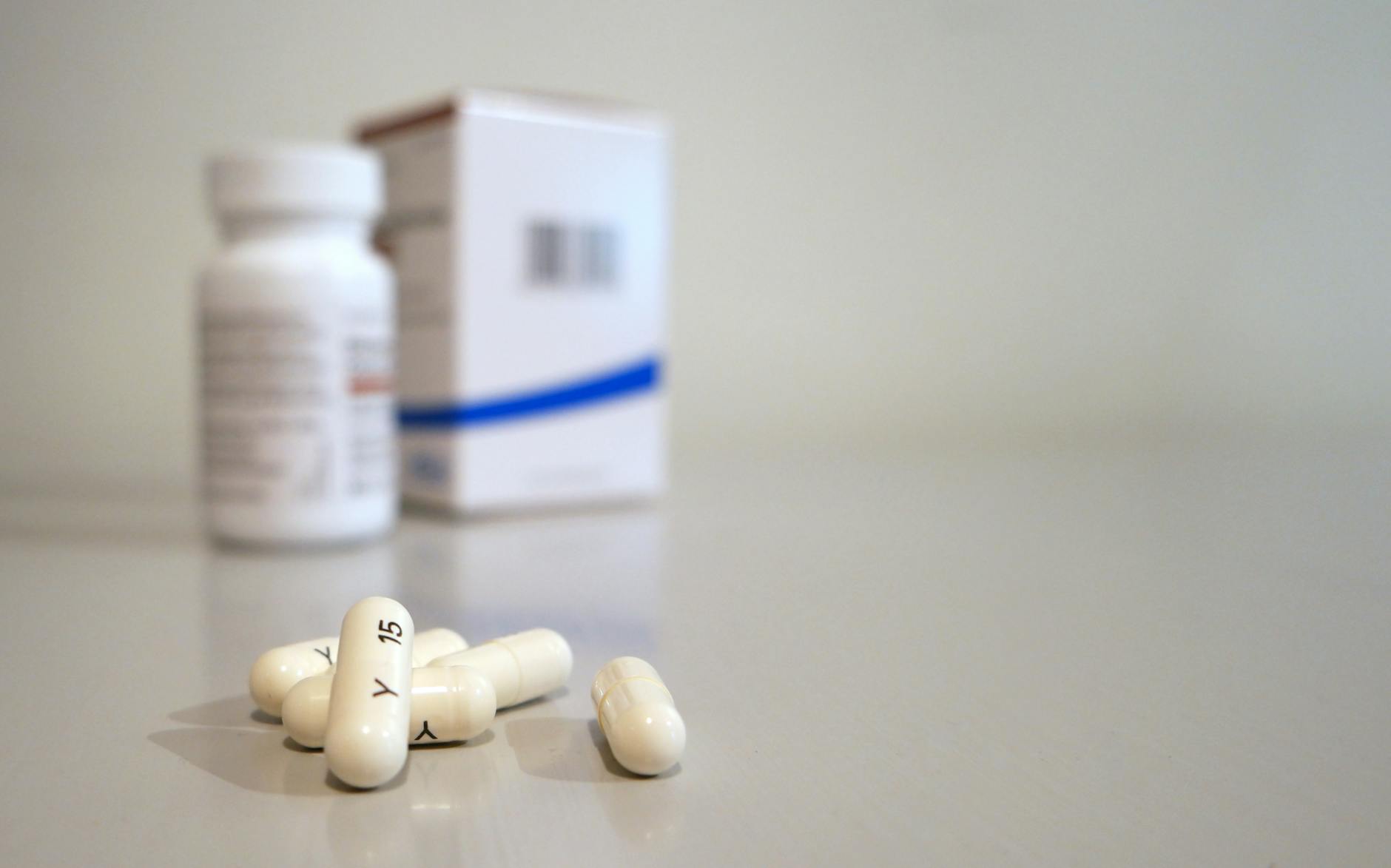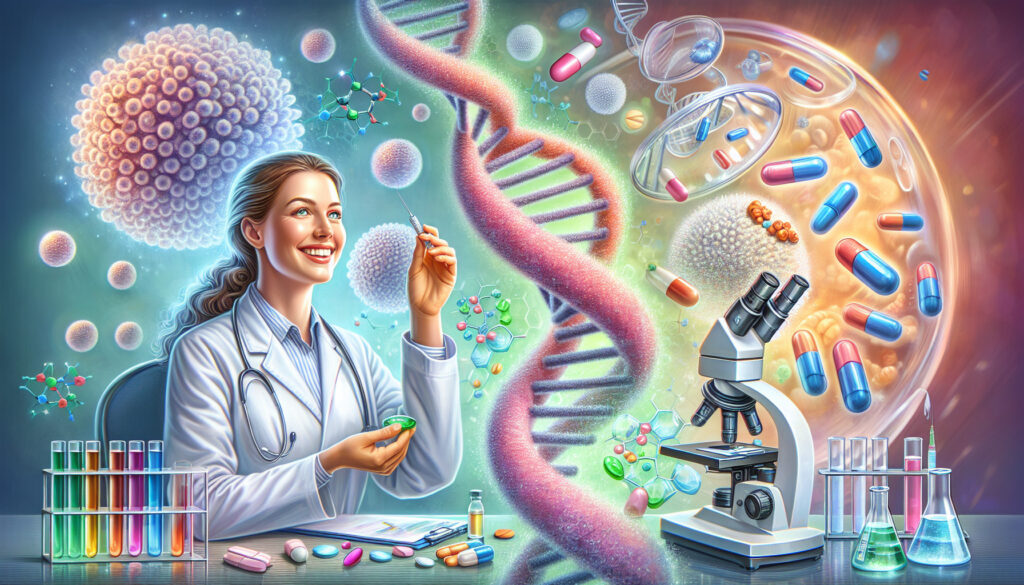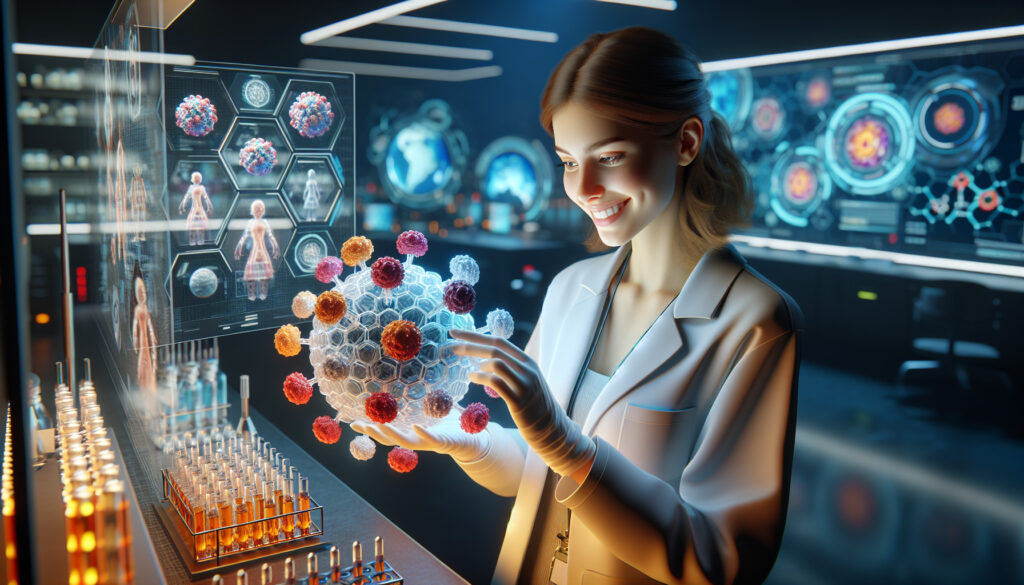
🌿 Nature’s Hidden Pharmacy – Biotech : Revolutionizing Drug Production
In a world grappling with complex health challenges, the answer might be hiding in plain sight—beneath the waves and within the roots of ancient plants. The pharmaceutical industry is witnessing a green revolution, as scientists turn to marine polysaccharides and plant bioactives to create groundbreaking drug formulations. But what if these natural compounds could not only treat diseases but also prevent further damage to our bodies?
Imagine a future where psychedelic medicines derived from nature combat neurological disorders, where marine waste transforms into life-saving biomaterials, and where AI-powered technologies unlock the secrets of plant-based therapies. This isn’t science fiction—it’s the cutting-edge reality of green biotechnology. From jaw-dropping discoveries in marine ecosystems to innovative extraction techniques that preserve our planet, we’re on the cusp of a paradigm shift in drug production. Join us as we dive into the fascinating world of green biotech solutions and explore how they’re reshaping the future of medicine, sustainability, and human health. 🌊💊🌱
Revolutionizing Drug Production with Marine Polysaccharides

A. Untapped potential of marine biological diversity
The oceans hold a vast and largely unexplored reservoir of biodiversity, offering immense potential for sourcing bioactive compounds. Marine environments have proven to be a rich source of molecules with superior biological efficacy compared to their terrestrial counterparts. This untapped potential has led to increased interest in marine-derived biomaterials for pharmaceutical development.
Key advantages of marine biological diversity:
- Abundance of unique compounds
- Minimal extraction costs
- Superior biological efficacy
- Underexplored potential for drug discovery
Marine polysaccharides (PLS) have emerged as particularly promising candidates for biomedical and biotechnological applications. These compounds, derived from various marine organisms, exhibit favorable properties that make them ideal for drug production and delivery systems.
| Marine PLS Source | Examples |
|---|---|
| Algae | Fucoidan, Alginate, Carrageenan |
| Animals | Hyaluronan, Chitosan |
B. Sustainable extraction techniques for marine polysaccharides
To harness the potential of marine polysaccharides, sustainable extraction techniques are crucial. These methods ensure the preservation of marine ecosystems while obtaining valuable compounds for drug production.
Sustainable extraction considerations:
- Minimal environmental impact
- Efficient use of marine resources
- Consistency in extraction processes
- Cost-effectiveness
However, challenges exist in maintaining product consistency due to seasonal and geographical variations in marine organisms. These factors can affect the molecular weight and structure of extracted polysaccharides, potentially increasing production costs.
C. Biomedical applications in tissue engineering and drug delivery
Marine polysaccharides offer a wide range of biomedical applications, particularly in tissue engineering and drug delivery systems (DDS). Their unique properties make them ideal candidates for developing advanced therapeutic strategies.
Key properties of marine PLS for biomedical applications:
- Solubility in aqueous solvents
- Biocompatibility
- Biodegradability
- Non-toxicity
These characteristics enable the creation of sophisticated drug delivery systems, including hydrogels and capsules. The structural versatility of marine PLS allows for modifications that enhance drug release profiles based on external stimuli such as temperature and pH.
D. Modification methods to enhance polysaccharide properties
To optimize the performance of marine polysaccharides in drug production and delivery, various modification methods can be employed. These techniques aim to enhance the targeting capabilities, biocompatibility, and overall efficacy of polysaccharide-based nanoparticles (NPs).
Modification strategies:
- Grafting polymer chains
- Functionalizing with specific ligands
- Surface modifications for improved targeting
- Chemical modifications to enhance drug encapsulation
Preparation methods for marine polysaccharide-based NPs:
- Self-assembly
- Polyelectrolyte complexation
- Hydrophobic interactions
- Ionic interactions
- Covalent crosslinking
Each preparation technique influences the size, stability, and drug release profiles of the resulting nanoparticles, allowing for tailored drug delivery systems.
With the groundbreaking potential of marine polysaccharides in revolutionizing drug production, it’s essential to consider how these advancements can be applied to other areas of pharmaceutical development. Now that we have covered the innovative use of marine resources, we’ll explore how green biotechnology is making waves in the field of psychedelic medicine, opening up new possibilities for treating mental health disorders and expanding our understanding of consciousness.
Green Biotechnology in Psychedelic Medicine

Now that we have explored the revolutionary potential of marine polysaccharides in drug production, let’s delve into another exciting frontier in green biotechnology: psychedelic medicine.
A. Core One Labs’ acquisition of Akome Biotech Ltd.
As the landscape of mental health treatments evolves, companies are exploring innovative approaches to address complex neurological disorders. Core One Labs’ acquisition of Akome Biotech Ltd. represents a significant step in this direction, aligning with the growing interest in psychedelic-based therapies.
B. Proprietary drug formulations combining psychedelics and plant bioactives
The integration of psychedelics with plant bioactives marks a novel approach in drug development. This combination leverages the therapeutic potential of substances like MDMA, LSD, and psilocybin, which have shown promising results in recent clinical studies. Unlike traditional antidepressants such as SSRIs, these psychedelic-based formulations offer several advantages:
| Traditional Antidepressants | Psychedelic-Based Formulations |
|---|---|
| Slow onset of action | Rapid effects |
| Daily dosing required | Less frequent dosing |
| High relapse rates (up to 40%) | Potentially lower relapse rates |
| Side effects including addiction risks | Different safety profile |
C. Targeted treatments for neurological disorders
The renewed interest in psychedelics has opened new avenues for treating various mental health conditions. Research indicates potential efficacy in:
- Treatment-resistant depression
- Post-traumatic stress disorder (PTSD)
- Anorexia nervosa
Companies like Compass Pathways are at the forefront of this research, specifically investigating psilocybin treatments for these challenging conditions. The approach emphasizes not only the pharmacological effects but also the importance of set and setting in maximizing therapeutic benefits.
D. Thin film oral strip technology for psychedelic delivery
Innovative delivery methods are crucial in enhancing the efficacy and accessibility of psychedelic treatments. Thin film oral strip technology represents a cutting-edge approach to psychedelic administration. This method offers several benefits:
- Precise dosing
- Improved bioavailability
- Ease of use for patients
- Potential for rapid onset of action
The development of such technologies aligns with the broader trend of personalizing mental health care and improving patient experiences.
It’s important to note that while the potential of psychedelic medicine is promising, the legal landscape remains complex. The status of these substances varies widely across jurisdictions, ranging from full illegality to decriminalization in some areas. This evolving legal context presents both challenges and opportunities for companies operating in this space.
The economic implications of psychedelic-assisted therapies are significant. Estimates suggest substantial cost savings for healthcare providers, which could drive further investment and research in this field. Major pharmaceutical companies have the opportunity to engage with this emerging market through strategic partnerships with innovative firms specializing in psychedelic treatments.
As we look towards the future of green biotechnology in medicine, the integration of psychedelics represents a paradigm shift in how we approach mental health treatment. This approach not only offers new hope for patients with treatment-resistant conditions but also aligns with the broader goals of sustainable and effective drug development.
With this groundbreaking work in psychedelic medicine paving the way for novel treatments, we now turn our attention to another crucial aspect of green biotechnology: the role of natural products in modern pharmacotherapy. This next section will explore how researchers are harnessing the power of nature to develop sustainable and effective pharmaceutical solutions.
Natural Products in Modern Pharmacotherapy

Now that we’ve explored the fascinating world of green biotechnology in psychedelic medicine, let’s delve into the critical role of natural products in modern pharmacotherapy, a field that has seen a resurgence of interest in recent years.
Historical importance and recent decline in pharmaceutical focus
Natural products have played a pivotal role in drug discovery and development throughout history. From antibiotics to statins and cancer treatments, many of the drugs we rely on today have their origins in nature. However, since the 1990s, there has been a noticeable decline in the pharmaceutical industry’s focus on natural products. This shift can be attributed to several factors:
- Challenges in drug discovery processes
- Difficulties in screening and isolation of compounds
- Complexities in optimization of natural products
Despite this decline, statistics reveal that between 1981 and 2019, a significant 42% of newly approved drugs originated from natural sources, underscoring their continued importance in pharmacotherapy.
Technological advancements reviving interest in natural product-based drug discovery
Recent technological innovations have sparked a renewed interest in natural products as potential drug leads. These advancements include:
- Enhanced analytical methods
- Genome mining techniques
- Improvements in microbial culturing
| Technology | Impact on Natural Product Research |
|---|---|
| Enhanced analytical methods | Improved identification and characterization of compounds |
| Genome mining | Facilitated discovery of novel bioactive molecules |
| Microbial culturing advancements | Expanded access to previously uncultivable microorganisms |
These technological breakthroughs have revolutionized the way researchers approach natural product-based drug discovery, making it more efficient and promising than ever before.
Combating antimicrobial resistance with natural compounds
One of the most pressing challenges in modern medicine is the rise of antimicrobial resistance. Natural products are emerging as a powerful weapon in this fight, offering unique structural features and diverse scaffolds that can potentially overcome resistance mechanisms. Key advantages of natural products in this context include:
- Greater scaffold diversity
- Optimization through evolutionary processes
- Higher molecular weights and complex stereochemistry compared to synthetic drugs
These characteristics make natural compounds particularly promising in the development of novel antibiotics and other antimicrobial agents.
Integration of natural products into contemporary drug development
The integration of natural products into modern drug development processes is becoming increasingly sophisticated. This approach combines the inherent advantages of natural compounds with cutting-edge technologies:
- Computer-assisted drug design
- Identification of specific biological targets
- Biotechnological approaches
This synergy between traditional natural product research and modern techniques is particularly evident in the treatment of complex diseases such as:
- Neurodegenerative disorders
- Kidney diseases
- Cancer
For instance, in the field of kidney disease treatment, natural products and their semisynthetic analogues, such as tacrolimus and sirolimus, play crucial roles in immunosuppression post-transplantation and managing advanced kidney cancer.
As we look to the future, the potential of natural products in drug discovery remains immense. Their structural diversity and unique bioactivities continue to offer promising avenues for developing superior therapeutic agents. This revitalized interest in natural product-based drug discovery sets the stage for our next topic: ensuring sustainability in marine resource utilization, a critical consideration as we tap into nature’s vast potential for pharmaceutical development.
Ensuring Sustainability in Marine Resource Utilization

Now that we have explored the role of natural products in modern pharmacotherapy, it’s crucial to address the sustainability aspect of marine resource utilization in green biotechnology. This section will delve into the eco-friendly approaches and practices ensuring the responsible use of marine resources in drug production and other biotechnological applications.
A. Eco-friendly extraction methodologies aligned with Green Chemistry principles
Marine biotechnology has made significant strides in developing sustainable extraction methods for marine-derived compounds. These methods are increasingly aligning with Green Chemistry principles, which prioritize environmental protection and resource conservation. For instance, the Stazione Zoologica Anton Dohrn (SZN) in Naples, Italy, focuses on ecosustainable marine biotechnology, emphasizing the importance of environmentally friendly extraction techniques.
Key eco-friendly extraction methodologies include:
- Advanced bioremediation techniques
- Compound-specific stable isotope analysis
- Single-cell production of n-3 long-chain polyunsaturated fatty acids (n-3 LC-PUFAs)
- Lipidomic analysis for targeted compound extraction
These methods not only reduce environmental impact but also enhance the efficiency of marine resource utilization in biotechnological applications.
B. Transition to sustainable aquaculture practices
Sustainable aquaculture is a critical component of responsible marine resource utilization. The biotechnology sector is playing a pivotal role in advancing sustainable aquaculture practices, addressing various challenges in fish farming and seafood production.
| Sustainable Aquaculture Innovations | Benefits |
|---|---|
| Recombinant DNA technology for gonadotropin production | Addresses reproductive issues in captive fish |
| Genetic engineering for sexual maturation control | Enhances breeding in hermaphroditic species |
| Modification of carbohydrate metabolism | Improves nutritional value of aquafeeds |
| Genetically engineered camelina plants | Produces omega-3 fish oils, reducing reliance on wild fish stocks |
These advancements not only improve aquaculture efficiency but also contribute to the conservation of wild fish populations and marine ecosystems.
C. Addressing overexploitation and environmental concerns
To combat overexploitation and mitigate environmental impacts, marine biotechnology is focusing on several key areas:
- Development of marine-safe biosurfactants
- Exploration of alternative sources for n-3 LC-PUFAs, such as myctophid fish and squid viscera oil
- Implementation of sustainable krill aquaculture practices
- Advancement in fishery management techniques
These efforts aim to reduce the pressure on wild marine populations while maintaining the supply of valuable marine-derived products for various industries, including pharmaceuticals and nutraceuticals.
D. Aligning with UN Sustainable Development Goals
Marine biotechnology initiatives are increasingly aligning their objectives with the United Nations Sustainable Development Goals (SDGs). The All-Atlantic Marine Biotechnology Initiative (AA-BIOTECMAR) exemplifies this alignment, focusing on:
- Enhancing human health through marine biotechnology
- Promoting sustainable use of marine resources
- Developing new technologies for aquaculture and food production
- Improving environmental monitoring techniques
This initiative fosters collaboration among nations, academia, and the private sector to address scientific and societal challenges related to the Atlantic Ocean, contributing to the broader goals of sustainable development and marine conservation.
By implementing these sustainable practices and aligning with global sustainability objectives, the marine biotechnology sector is paving the way for responsible resource utilization while driving innovation in drug production and other biotechnological applications.
With this comprehensive approach to sustainability in marine resource utilization, we set the stage for the next section, which will explore the innovative technologies driving green biotech solutions. These cutting-edge advancements will further enhance our ability to harness marine resources responsibly while pushing the boundaries of biotechnological applications in medicine and beyond.
Innovative Technologies Driving Green Biotech Solutions

Now that we’ve explored the importance of ensuring sustainability in marine resource utilization, let’s delve into the innovative technologies driving green biotech solutions. These advancements are revolutionizing the way we approach drug production and natural product extraction, aligning with the principles of sustainability and eco-friendliness.
A. Supercritical Fluid Extraction and Microwave-Assisted Extraction
In the quest for more sustainable extraction methods, two techniques have emerged as game-changers:
- Supercritical Fluid Extraction (SFE)
- Microwave-Assisted Extraction (MAE)
These methods offer significant advantages over traditional extraction techniques:
| Method | Advantages |
|---|---|
| SFE | – Reduced solvent use<br>- Enhanced yields<br>- Preservation of bioactivity |
| MAE | – Improved efficiency<br>- Faster extraction times<br>- Lower environmental impact |
The synergy between these techniques, known as ultrasonic-microwave-assisted extraction (UMAE), has shown promising results in improving overall extraction yields and quality. This combination exemplifies the potential of integrating multiple green extraction processes to maximize efficiency and sustainability.
B. Genome mining and improved microbial culturing techniques
Advancements in genetic manipulation and microbial culturing are opening new avenues for sustainable drug production. A prime example is the research conducted on the cyanobacterium Synechococcus elongatus. By manipulating its circadian regulatory mechanisms, researchers have enhanced its capacity to produce valuable bioproducts.
Key findings include:
- Knockout of the labA gene increases heterologous gene expression
- Overexpression of the kaiA gene influences circadian clock and gene expression patterns
- Enhanced production of renewable fuels, pharmaceuticals, and other chemicals
These genetic modifications have resulted in expression levels exceeding 1% of total protein for targeted compounds, showcasing the potential of this approach for industrial applications.
C. Enhanced analytical methods for natural product screening
The development of advanced analytical techniques has significantly improved our ability to screen and identify natural products for pharmaceutical applications. Some notable advancements include:
- RNA sequencing for transcriptomic analysis
- High-throughput screening methods
- Advanced chromatography techniques
These methods allow for more efficient identification and characterization of bioactive compounds, accelerating the drug discovery process while minimizing resource consumption.
D. Development of polysaccharide-based fibers, films, and hydrogels
Green biotechnology is not limited to extraction and production methods; it also extends to the development of novel biomaterials. Companies like Givaudan are pioneering the use of plant-derived polysaccharides to create innovative products for the beauty and pharmaceutical industries.
Some notable developments include:
- K-Phyto™ Camelia: A plant cell culture-derived ingredient for skincare
- K-Phyto™ GHK: A phytopeptide-based active for hair care
- Polysaccharide-based hydrogels for drug delivery systems
These advancements showcase the potential of utilizing plant-based materials in creating sustainable and effective products for various applications.
By harnessing these innovative technologies, the green biotech industry is making significant strides in developing more sustainable and efficient methods for drug production and natural product extraction. These advancements not only improve the quality and efficacy of the final products but also contribute to the overall goal of reducing the environmental impact of pharmaceutical and cosmetic industries.

Green biotechnology is revolutionizing drug production, offering sustainable and innovative solutions across various fields. From harnessing marine polysaccharides to exploring psychedelic medicines, the industry is embracing nature’s potential while ensuring responsible resource utilization. Advanced technologies like AI, microfluidics, and computational methods are accelerating drug discovery, allowing for more efficient identification and development of bioactive compounds.
As we move forward, the integration of natural products with cutting-edge scientific advancements holds immense promise for addressing global health challenges. By combining traditional knowledge with modern techniques, we can unlock new possibilities in pharmacotherapy, tissue engineering, and regenerative medicine. The future of drug production lies in sustainable practices, interdisciplinary collaboration, and a renewed focus on nature’s vast pharmaceutical potential.

